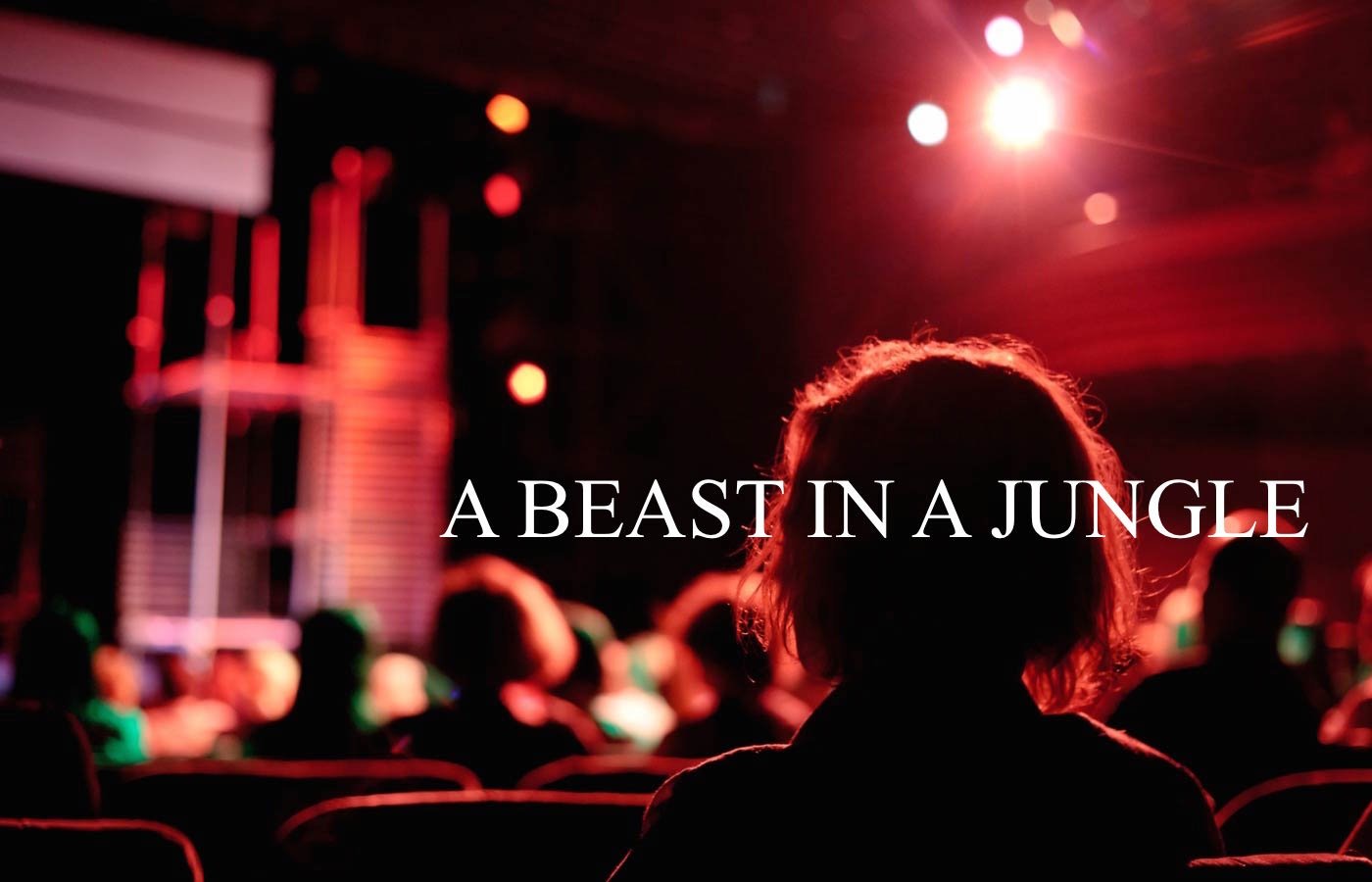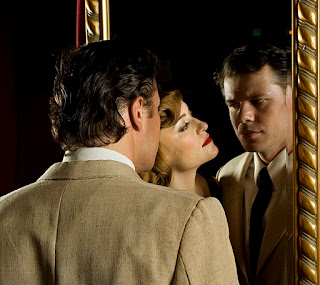Ensemble Parallèle's Orphée
Ensemble Parallèle's highly anticipated production of Phillip Glass' chamber opera Orphée debuted at the Herbst last weekend. Last year the company staged what was by all accounts a stunning production of Berg's Wozzeck, which I missed because I was out of town so I was pretty keen not to miss their annual production this time around. It didn't disappoint.
Actually, that's an understatement. For a small company with limited resources, staging an opera for only two performances, I was somewhat baffled and frequently amazed at the high level of quality and imagination permeating every aspect of this superb production. When the Femme Fatale and I took our seats and saw the orchestra set up on the front of the stage I'll admit to being slightly confused, thinking how are they going to stage this with the orchestra front and center like that? The lights went down, and Orphée's face, brilliantly portrayed and sung by Eugene Brancoveanu, appeared on five video screens mounted at the back of the stage. He introduced himself like a young man preening before a mirror, practicing his pick-up lines as each screen showed him from different angles and close-ups.
Then Ensemble Parallèle's conductor and director Nicole Paiement ascended a ridiculously tall podium and the music began. To the right of the stage, on a small platform used to enter the staging area, a cafe scene unfurled which culminated in the murder of the poet Cégeste, played by Thomas Glenn. This was entertaining and had an air of the sinister about it as Glass' music begins with a propulsive, carnivalesque drive.
But having not seen the Jean Cocteau film on which the opera is closely based, I kept swivelling my head to read the surtitles above the stage, thinking to myself, two hours of this is going to make me crazy. Then the orchestra descended into a pit I didn't know the stage contained, revealing an entire set behind it. It was a nice touch of flair that proved to be the first of many to follow.
Once the fourteen piece orchestra was down in the hole, the audience was treated to a set that looked better than it had any right to. A blue light cast a cool glow over the domestic life of Orphée and Eurydice (Susannah Biller) and in the underworld everything was a lurid red. The costumes were perfect, especially Phillip Skinner's turn as the Judge in a completely over-the-top Louis XIV wig that looked to be about three feet high and would have been right at home on the stage of Beach Blanket Babylon. I almost hate to make that comparison, because I don't want to imply anything about the production was frivolously staged and wasn't carefully thought out. Just the opposite was the case. Along with the ample singing and acting talent on display in every role, (including the circus performers and supers), it's obvious the creative team worked extremely hard and the results paid off handsomely. Director and production designer Brian Staufenbiel did a hell of a job.
As Death, or La Princesse, Marnie Breckenridge initially seemed to struggle, perhaps due to singing the role the night before, but by the time she sang the first of two duets with Brancoveanu in the second act she was in great voice and became the focal point of the show, delivering a mesmerizing performance. And permit me to comment on those duets. If you have the notion in your head Glass can't write for voice or that his music lacks emotional depth, you need to hear this. The scenes featuring Death and Orphée as doomed lovers were simply beautiful. Most especially, the final moment of the opera was one of the most perfect endings I've ever seen on a stage, rivalling that of the recently seen Eonnagata in its poignancy.
As Heurtibise, the chauffeur from Hell, John Duykers gave a memorable performance, though his voice wasn't particularly robust. As mentioned before, Brancoveanu was excellent. Thomas Glenn handled the roles of Cegeste and the Reporter in good voice and aplomb. Making the most of their smaller roles, Brooke Muñoz and Austin Kness performed well. Susannah Biller remains an Adler fellow worth keeping an eye on. Also making significant contributions to the overall effect and success of the performance were David Poznater working the Roue Cyr, and the incredibly talented aerialist Marina Luna, whose strength even the Femme Fatale had to admire.
Paiement did a wonderful job with the orchestra, which had a marvelous rhythmic quality throughout and fully integrated itself with the singers.
My only complaint is there were only two performances. If you missed Ensemble Parallèle's annual weekend of opera this year, make a plan to see their upcoming performances of John Harbison's The Great Gatsby. It's not going to happen until a full year from now, but I'm already looking forward to it. I've read elsewhere they are also going to be presenting Virgil Thomson's Four Saints in Three Acts as part of SF MOMA's upcoming exhibit, The Steins Collect: Matisse, Picasso, and the Parisian Avant-Garde. Be sure to check it out. For a small company, they are having a significant impact on the local opera scene.
SF Mike, who was one of the delightfully decadent and scary supers, has some great photos and comments about Orphée on his blog. All of the photos appearing in this post are by Steve DiBartolomeo, Westside Studio Images, Santa Cruz, CA. http://www.westsidestudioimages.com/
After the performance the Femme Fatale and I went to an Oscar party where I found myself to be the only male in attendance. I was forced to choose a persona for the evening, so I picked Jennifer Lopez over Snookie. As we pondered what exactly is the matter with Halle Berry, I consumed everything placed in front of me and then as the night wore on I consumed everything within reach. Eventually I decided somewhere along the way to abandon my J-Lo persona in favor of Elizabeth Taylor in Who's Afraid of Virgina Woolf? The Femme Fatale, who had previously been the Hoff, dropped him in favor of Richard Burton. To the young people on the bus to whom possibly inappropriate suggestions were made, I apologize.
Mark Rudio



